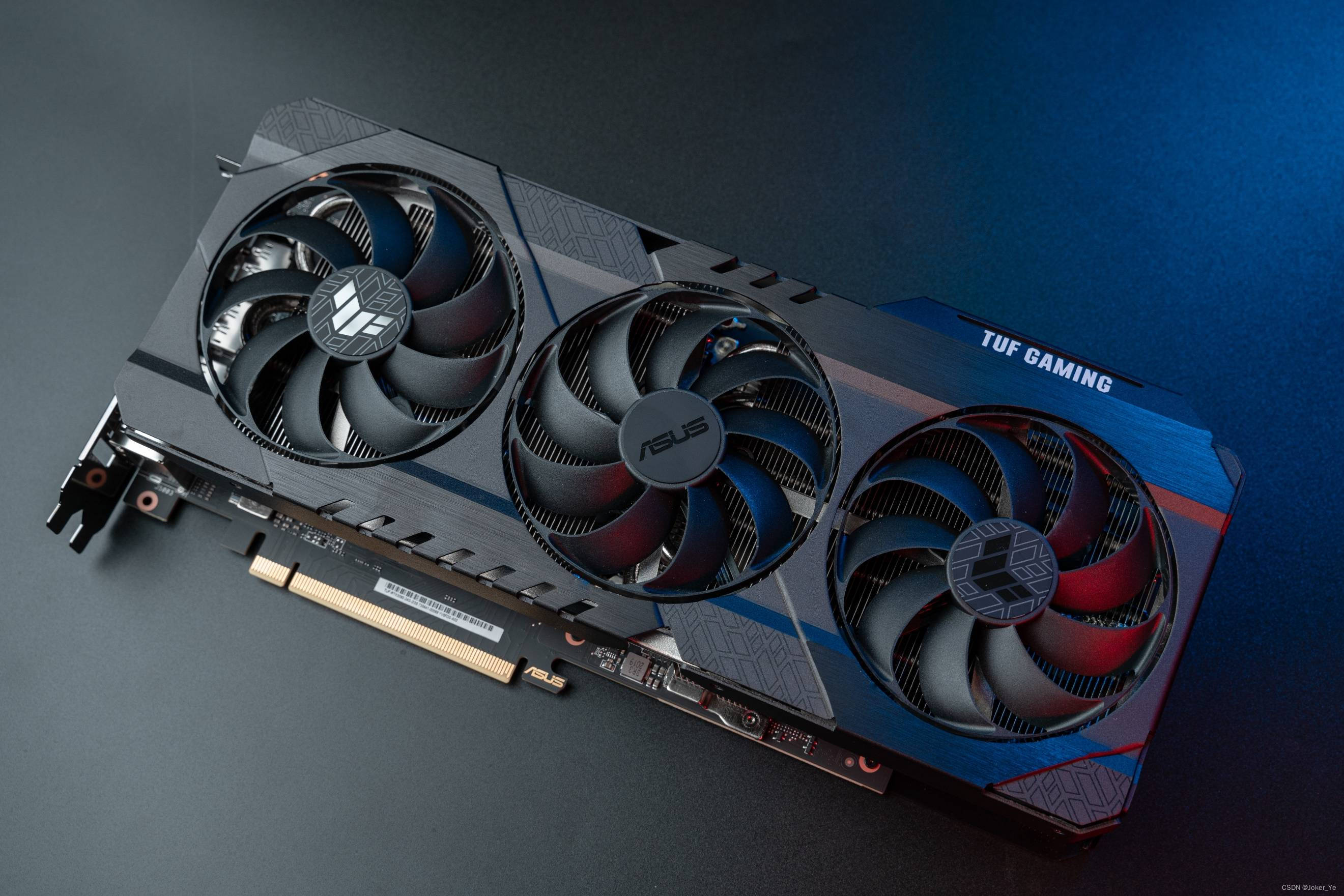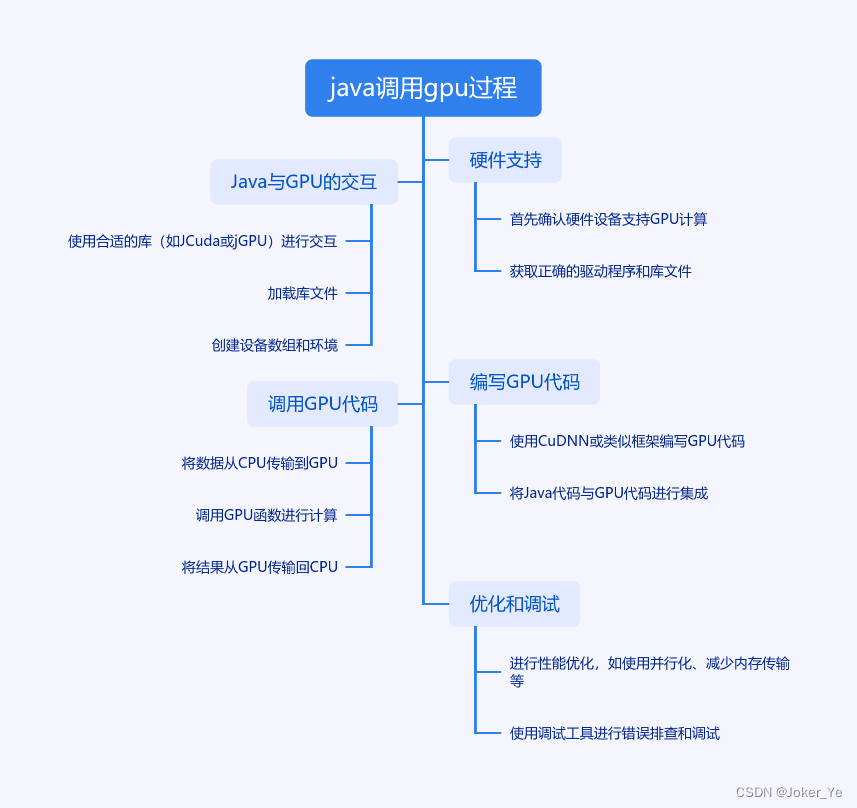
In recent years, there have been more and more video developments. We need dynamic characters to introduce products instead of a single display page. At this time, video processing becomes very important. In the past, Java or now it is more popular. Springboot relies on web pages and apps for display, but it has to rely on some libraries to process video streams (JavaCv, opencl)
Server graphics cards are used in Java, usually for high-performance computing or graphics rendering. However, it should be noted that Java, as a general programming language, does not have the ability to directly access hardware resources (such as graphics cards). It relies more on the operating system and operating environment to access these resources.
If you want to use a server graphics card in a Java program, you may need to use some special libraries or APIs to achieve this. For example, you can use Java’s OpenCL (Open Computing Language) library to access the GPU (Graphics Processing Unit). OpenCL allows developers to write parallel programs that can run on a variety of different types of hardware, including CPUs, GPUs, and other processors.

Here is a simple Java example using OpenCL:
import org.opencl.Context;
import org.opencl.Kernel;
import org.opencl.Program;
import org.opencl.Platform;
import org.opencl.devices.Device;
public class OpenCLExample {
public static void main(String[] args) {
// Get platform and device information
Platform platform = Platform.getPlatform();
Device device = platform.getDevices()[0]; // Get the first device
Context context = device.createContext(); // Create context
//loader
Program program = context.createProgram("path/to/your/program.cl"); // Replace with your OpenCL program path
program.build(); // Compile program
Kernel kernel = program.createKernel("yourKernelName"); // Create kernel
//Execute the kernel and process the results
Object inputData = ...; // input data
Object outputData = kernel.execute(inputData); // Execute the kernel and get the output data
// Process output data...
}
}
Note that this example is very basic and does not include anything graphics card related. You need to replace the program path and kernel name, and provide input data and process output data according to your needs. You also need to make sure that your system has the OpenCL driver installed and that Java can find the OpenCL library. The exact setup method may vary depending on your system and hardware.
There is also the idea of using the GPU of the graphics card to realize Ai intelligence.
Using the graphics card’s GPU in Java usually requires relying on some specific libraries or APIs. The more common ones are using CUDA and OpenCL.
CUDA is a parallel computing platform and API developed by NVIDIA, which allows developers to use the GPU of NVIDIA graphics cards for calculations. In Java, the JCuda library can be used to access the CUDA API to perform computations using the GPU.
OpenCL is a cross-platform parallel computing API developed by Khronos Group, which allows developers to perform calculations using various types of processors (including CPUs, GPUs, and other processors). In Java, the JOCL library can be used to access the OpenCL API to use the GPU for calculations.
Here is an example of calling a CUDA function using JCuda:
import jcuda.*;
public classJCudaExample {
public static void main(String[] args) {
// Get device ID and thread block size
int deviceId = 0; // Assume the first device is used
int blockSize = 16; // Thread block size is 16x16
int gridSize = (int) Math.ceil((double) NvDevice.getGlobalMemorySize() / blockSize); // Calculate the number of thread blocks
//Create JCuda program object
JCudaProgram program = newJCudaProgram() {
@Override
protected void setup(int argCount, Pointer argFlags, Pointer argValues) {
// Setting parameters
argValues.setInt(0, blockSize); //Set the thread block size
argValues.setInt(4, gridSize); // Set the number of thread blocks
}
};
//Load CUDA function
program.loadFunction("myKernel"); // Replace with your CUDA function name
// Allocate memory and initialize data
Pointer pointer = new Pointer(); // Allocate memory space to store output data
int size = (int) Math.ceil((double) NvDevice.getGlobalMemorySize() / blockSize); // Calculate memory size
cudaMalloc(pointer, size); // allocate memory space
float[] data = new float[size]; // Initialize the data, assuming that the data is of float type
for (int i = 0; i < size; i + + ) {
data[i] = i; // Initialize data to the value of i
}
JCuda.memcpy(Pointer.to(data), pointer, size * Sizeof.FLOAT); // Copy data to GPU memory
//Set parameters and execute CUDA function
Pointer kernelArgs = Pointer.to(Pointer.to(Pointer.to(Pointer.to(Sizeof.INT).byteValue())) // Input data pointer (int type)
.toBuffer().rewind(), // Reset buffer pointer
Pointer.to(data).toBuffer().rewind()); // Output data pointer (float type)
program.setArgs(kernelArgs); // Set parameters
program.run(blockSize, gridSize, true); // Execute the CUDA function and store the output data in GPU memory
//Copy the output data back to the host memory and release GPU memory space
float[] outputData = new float[size];
JCuda.memcpy(Pointer.to(outputData), pointer, size * Sizeof.FLOAT); // Copy the data back to the host memory
cudaFree(pointer); // Release GPU memory space
// Process output data...
}
}```
Which N card or A card has better JavaCV processing capabilities?
In terms of processing power, both N-card and A-card have their own advantages and disadvantages. Generally speaking, the N card has advantages in execution efficiency and flexibility, while the A card has advantages in theoretical computing power and power consumption.
Each stream processor in the N card’s GPU has a complete ALU function, and each stream processor can fully work when an operation instruction is issued. This gives the N card advantages in execution efficiency and flexibility, but when processing pure 4D instructions, each stream processor can only process one 4D instruction, which limits its theoretical computing capabilities.
The design of the A card also has its own notable features, such as powerful floating point computing capabilities. The stream processor of A card is generally 4-5 times that of N card. Its theoretical computing power is much stronger than that of N card, and its power consumption is relatively lower. But the execution efficiency of A card is not high.
As for what JavaCV can handle, it depends on the specific tasks you need to accomplish and the libraries you use. Some common JavaCV libraries, such as OpenCV and FFmpeg, can use GPU acceleration to improve performance. In this case, using N-Card or A-Card depends on your specific needs and preferences.
If you need to perform tasks that require efficient execution and flexibility, such as image processing or video analysis, an N-card may be more suitable for your needs. If you need to perform tasks that require strong theoretical computing capabilities, such as scientific computing or machine learning, the A card may be more suitable for your needs.
Which N card or A card has better video processing capabilities?
If the editing software you use supports CUDA acceleration technology (such as Adobe Premiere Pro), an N-card graphics card will be more suitable. The N-card graphics card supports CUDA acceleration technology, which can improve computing efficiency and shorten video rendering and export time. The N-card graphics card also has excellent performance in video special effects, scene mixing, etc. In addition, N-card graphics cards also have excellent gaming performance and can be used as multi-purpose graphics cards. In comparison, N-card graphics cards are relatively cheap and more suitable for users with limited budgets.
If you are using OpenCL acceleration technology (such as DaVinci Resolve), the A card graphics card will be better. The stream processor of an A-card graphics card is generally 4-5 times that of an N-card. Its theoretical computing power is much stronger than that of an N-card, and its power consumption is relatively lower.
How does Java use the GPU of the graphics card to implement artificial intelligence?
Using the graphics card’s GPU to implement artificial intelligence in Java usually requires the use of corresponding libraries or frameworks to invoke the computing power of the GPU. Here are some steps for implementing artificial intelligence and GPU computing using Java:
- Determine which GPU and drivers to use: Choose the appropriate GPU and make sure the correct drivers are installed.
- Install a Java development environment: Install a Java Development Kit (JDK) and an integrated development environment (IDE), such as Eclipse or IntelliJ IDEA.
- Download and install CUDA or OpenCL: Select CUDA or OpenCL based on the type of GPU used, and download the corresponding driver and development kit.
- Download and install the JavaCV library: JavaCV is a Java library that provides access to computer vision and machine learning libraries such as OpenCV and FFmpeg and provides GPU acceleration.
- Write code: Use JavaCV library and other artificial intelligence libraries to write code to implement the required artificial intelligence tasks.
- Compile and run the code: Compile the code using the Java compiler and run it on a computer with a GPU.
What are the advantages and disadvantages of using GPUs for machine learning in Java?
- Accelerated computing: GPU has high-speed parallel processing capabilities, which can accelerate the calculation process of machine learning algorithms, especially when processing large amounts of data.
- Improved accuracy: GPUs can provide higher computational accuracy, which is very important for many machine learning algorithms and can improve the accuracy of the model.
- Reduced memory consumption: GPU has smaller memory consumption, which can reduce the burden on the computer system and improve overall performance.
- Scalability: GPU has good scalability and can increase computing power by increasing the number of GPUs, making it suitable for large-scale machine learning tasks.
However, there are some disadvantages to using GPUs for machine learning:
- Compatibility issues: Different GPU brands and models may have compatibility issues, and you need to choose the correct driver and development library.
- Programming is difficult: Programming with GPU requires a higher technical level and requires understanding of programming frameworks and APIs such as CUDA or OpenCL.
- High power consumption: Using the GPU for calculations consumes a lot of power and increases the power consumption of the computer system.
- High cost: Purchasing a GPU and related development kits requires a high cost, which may not be affordable for some small businesses and individuals.
Which libraries in Java support GPU for machine learning?
In Java, there are several libraries that support GPU for machine learning:
- Deeplearning4j: Deeplearning4j is a Java-based deep learning library that supports GPU acceleration and can be used to build various deep learning models.
- TensorFlow Java: TensorFlow is a popular machine learning library. TensorFlow Java provides a Java API that can be used to build and train machine learning models and supports GPU acceleration.
- Keras: Keras is a high-level deep learning library that can be used to build various deep learning models and supports GPU acceleration.
- JavaCV: JavaCV is a Java library that provides access to computer vision and machine learning libraries such as OpenCV and FFmpeg and provides GPU acceleration.
These libraries all provide GPU acceleration functions, which can greatly improve the computing efficiency and accuracy of machine learning. However, it should be noted that different libraries may support GPUs in different degrees and in different ways. You need to choose a library that suits your needs and understand its usage and limitations.
So using GPU for machine learning in Java can be achieved by using libraries such as Deeplearning4j, TensorFlow Java, Keras and JavaCV. These libraries provide GPU acceleration capabilities that can greatly improve the computational efficiency and accuracy of machine learning. However, you need to be careful to choose a library that suits your needs and understand its usage and limitations. Using GPUs for machine learning can improve computing efficiency and accuracy, but issues such as compatibility, programming difficulty, power consumption, and cost need to be addressed.